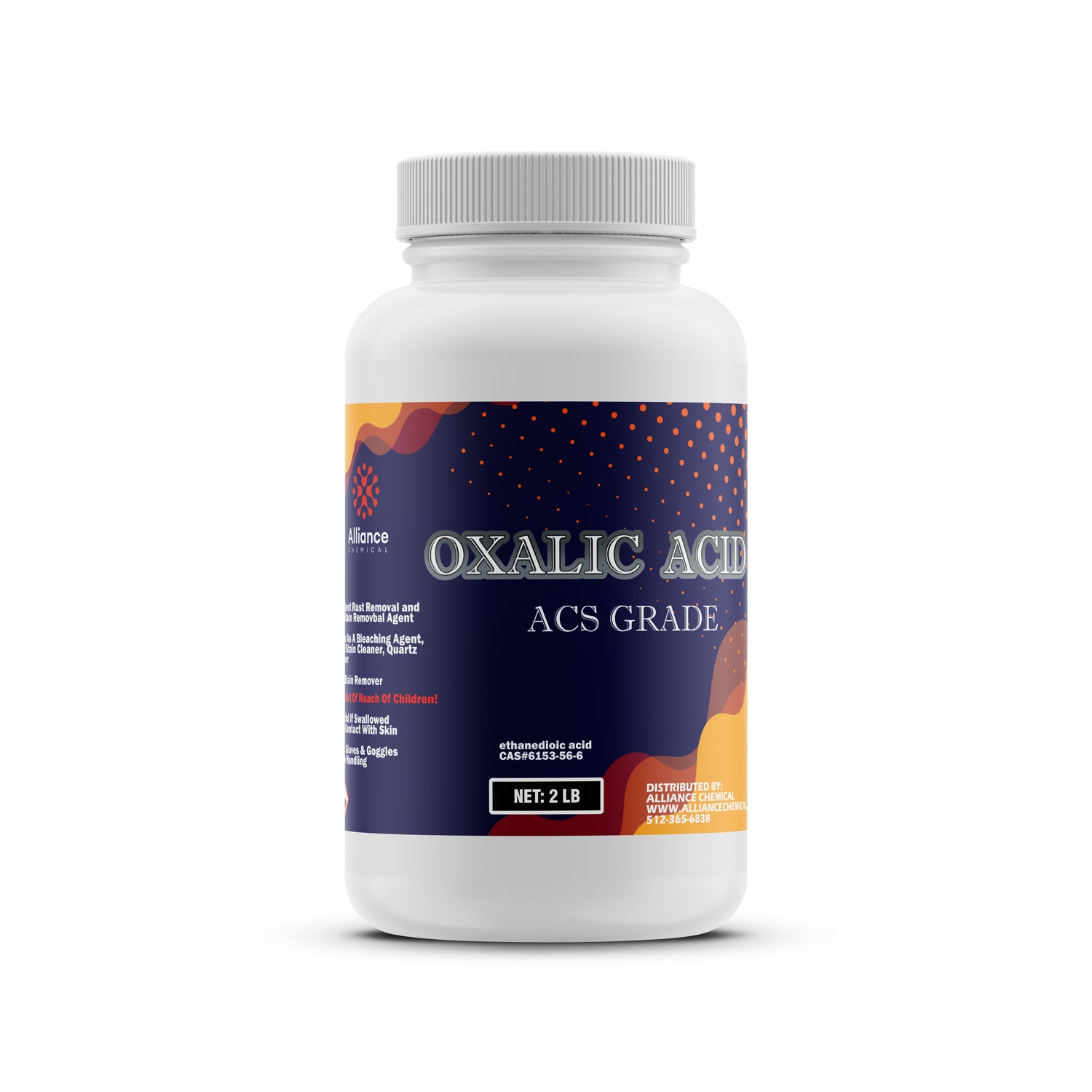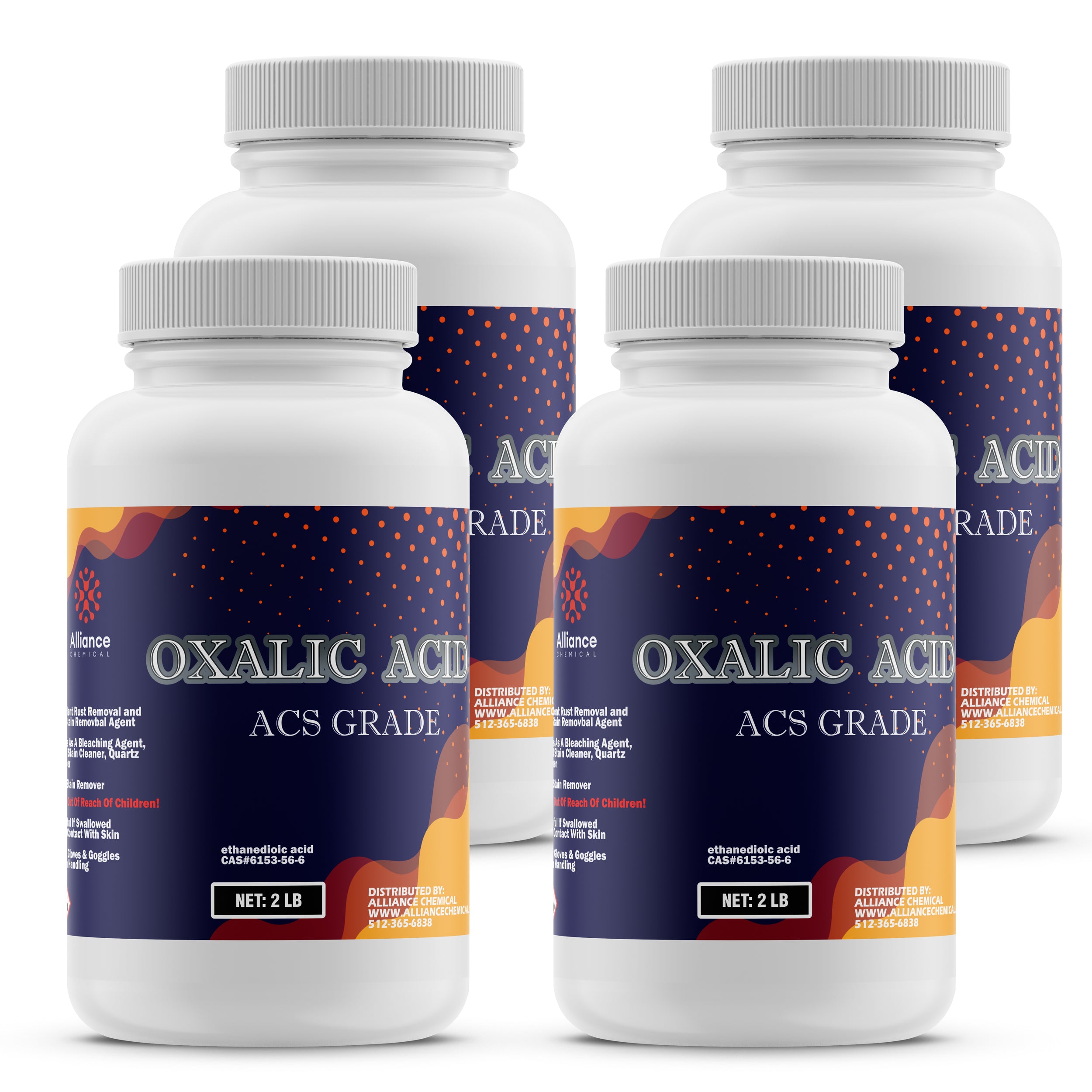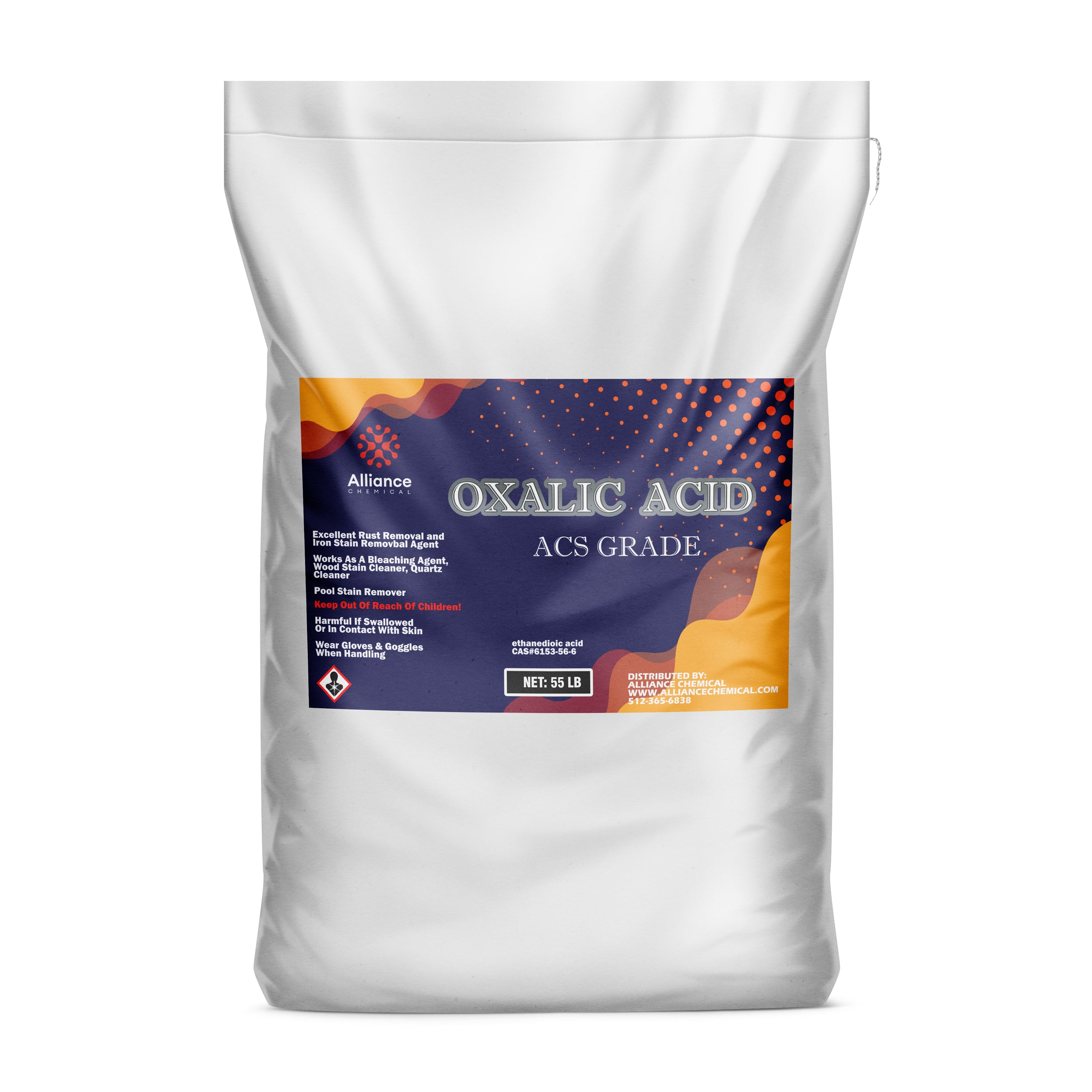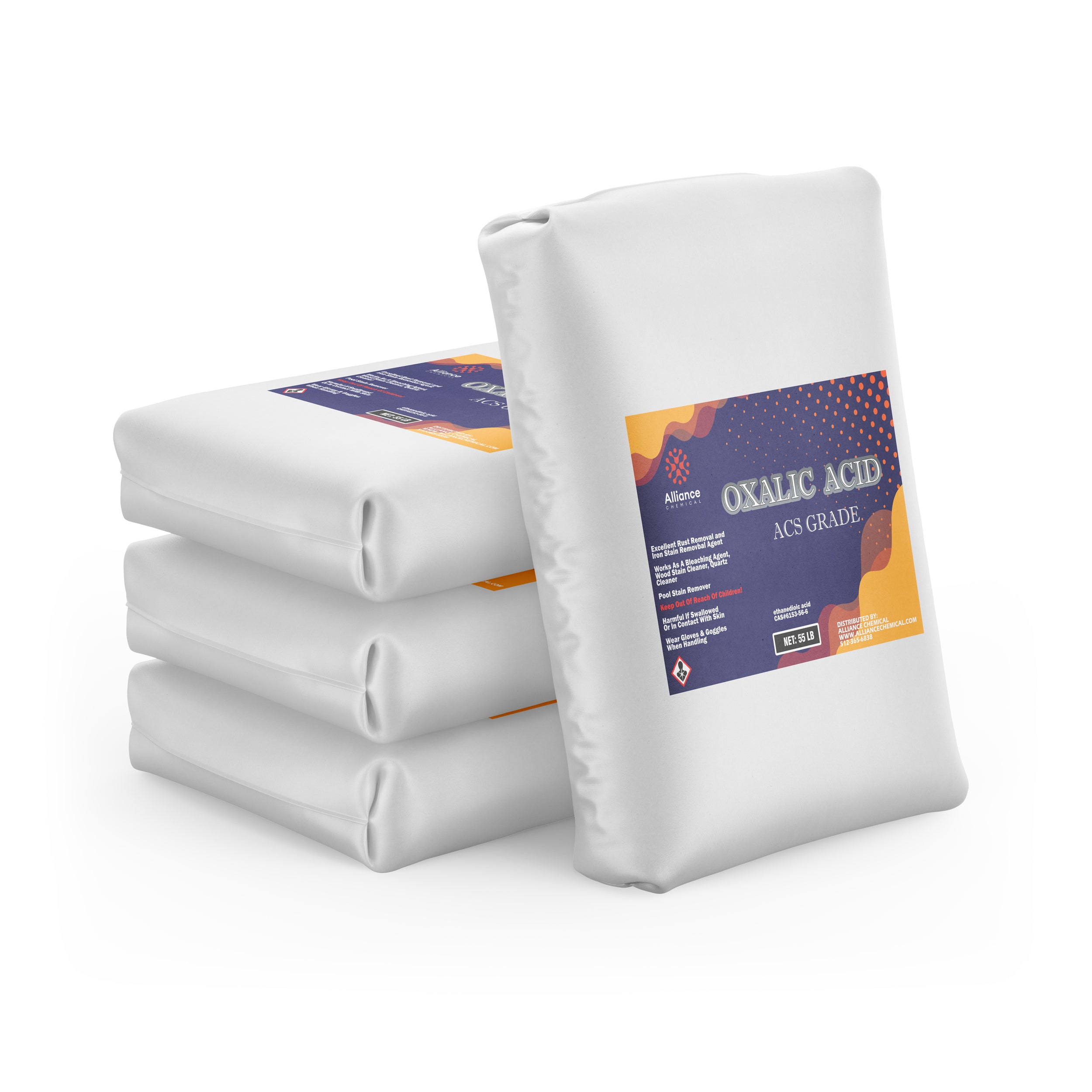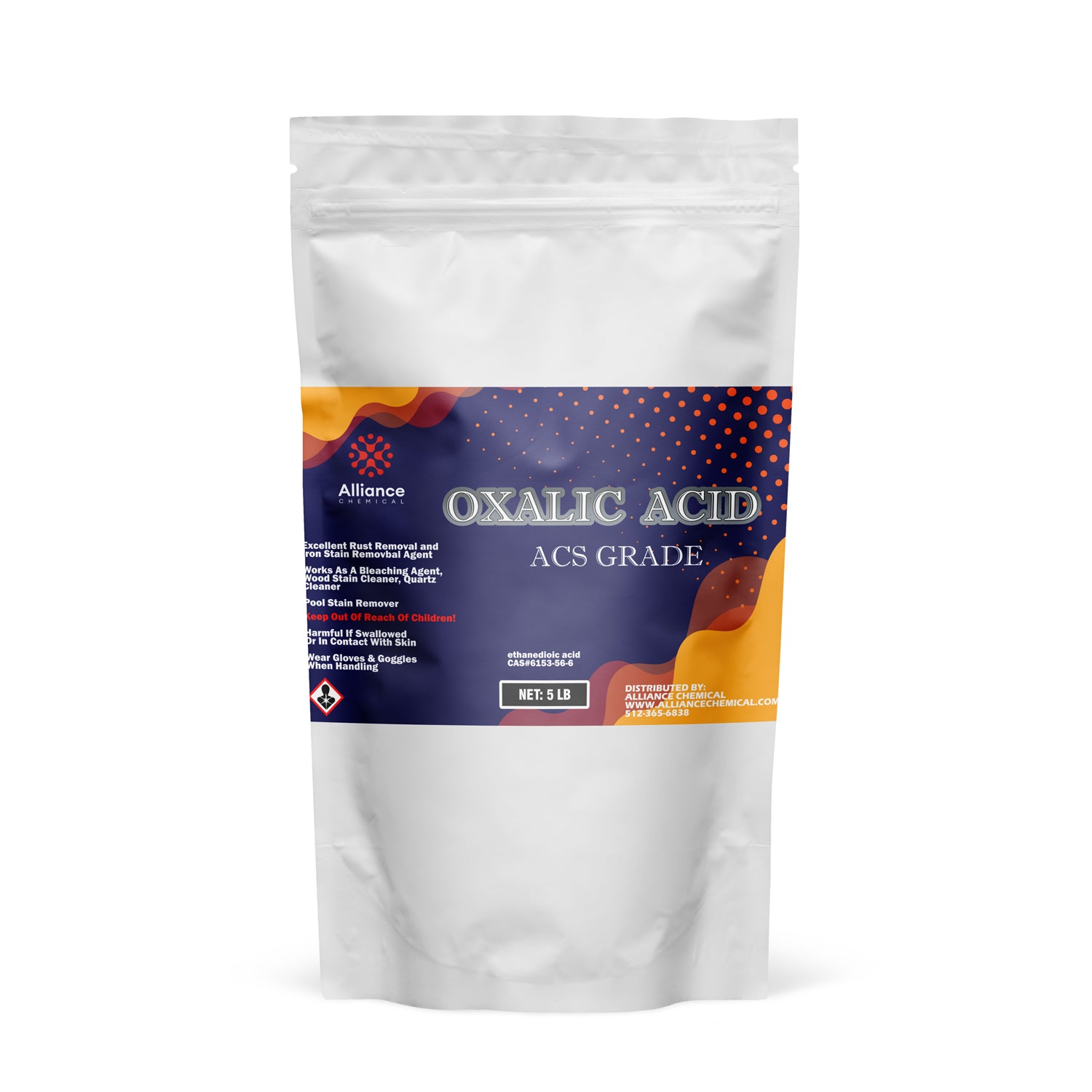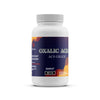Ask a question
Product Overview
Oxalic Acid ACS Grade (C₂H₂O₄) is a colorless, crystalline organic acid supplied in white crystalline powder form. This ACS-grade Ethanedioic Acid exhibits high purity (assay 99–100%, typical 99.5%) and low moisture content (typical 0.1%, max 0.5%) to ensure reliable performance in analytical and industrial applications. It is soluble in water and alcohol, with a density of 1.65 g/mL at 25°C and a boiling range around 189 °C. The compound shows a strong first dissociation constant (pKa ~ 1.23) and readily forms metal ion complexes, features that underpin its use in analytical chemistry, metal processing, and precision cleaning protocols. Its low residue after evaporation (typical 0.0005%, max 0.001%) supports high-purity requirements in spectroscopic and dissolution-based procedures. The material is designed for controlled handling to maintain purity and minimize trace metal contamination during storage and use.
In addition to its analytical utility, oxalic acid acts as a cleaning agent, pH adjuster, and bleaching adjunct in wood processing and textile applications. ASTM/ACS-compliant quality control, stringent impurity limits (e.g., iron, copper, manganese, nickel, lead, zinc, calcium, magnesium, sodium, arsenic, sulfate, chloride, phosphate, nitrate, ammonium, bromate, chlorate, and heavy metals), and a well-defined specification profile make it suitable for laboratory reagent-grade and industrial use under supervised conditions. The product is manufactured and packaged to meet ACS Reagent Grade and USP-NF monograph standards, reinforcing its suitability for critical analytical work and process chemistry.
Key Properties
- Appearance: White crystalline powder
- Chemical Formula: C₂H₂O₄
- Molecular Weight: 90.03 g/mol
- Boiling Point: 189 °C
- Specific Gravity (20°C): 1.66 (min 1.65, max 1.67)
- Assay (wt%): 99–100% (typical 99.5%)
- Water Content: ≤0.5% (typical 0.1%)
- Residue After Evaporation: ≤0.001% (typical 0.0005%)
- pKa (First Dissociation): 1.23
- CAS: 144-62-7
- Chloride (ppm): ≤0.5 (typical 0.1)
- Sulfate (ppm): ≤0.5 (typical 0.1)
- Iron (ppm): ≤0.2 (typical 0.05)
- Copper (ppm): ≤0.5 (typical 0.1)
- Manganese (ppm): ≤0.5 (typical 0.1)
- Nickel (ppm): ≤0.5 (typical 0.1)
- Lead (ppm): ≤0.5 (typical 0.05)
- Zinc (ppm): ≤0.5 (typical 0.1)
- Calcium (ppm): ≤0.5 (typical 0.1)
- Magnesium (ppm): ≤0.5 (typical 0.1)
- Potassium (ppm): ≤0.5 (typical 0.15)
- Sodium (ppm): ≤0.5 (typical 0.1)
- Arsenic (ppm): ≤0.01 (typical 0.005)
- Arsenic (as As, ppm): ≤0.01 (typical 0.005)
- Heavy Metals (as Pb, ppm): ≤0.5 (typical 0.1)
Common Applications
- Metal Cleaning Agent: Effective dissolution of rust and scale for pretreatment and surface preparation in metal finishing and fabrication processes.
- Analytical Reagent: Used in titrations and determination of metal ions; supports complexation-based separations and quantitative analysis.
- pH Adjuster: Utilized to adjust and stabilize pH in industrial water treatment and chemical processing streams.
- Oxidizing Agent (Reducing Conditions): Participates in selective oxidation reactions within organic synthesis and process chemistry.
- Wood Bleaching Agent: Employed in wood and textile bleaching applications where controlled oxidation is required.
- Laboratory Reagent: Standard reagent for diverse chemical reactions and analytical protocols in research settings.
Safety Precautions
Handling and storage should follow standard laboratory hygiene and engineering controls: store in a cool, dry place away from incompatible materials, in HDPE or glass containers to minimize container interactions, and protect from moisture and direct sunlight. Use PPE including chemical-resistant gloves, splash goggles, and protective clothing; ensure good ventilation in storage and work areas to minimize inhalation exposure. Maintain container integrity, monitor for signs of moisture uptake, and comply with applicable OSHA/GHS requirements. Ensure spill containment and appropriate waste handling procedures are in place to prevent environmental release and exposure.
Emergency procedures: In case of contact with skin or eyes, rinse immediately with plenty of water for several minutes and seek medical attention if irritation persists. If inhaled, move to fresh air and seek medical advice for symptoms. If swallowed, rinse mouth and do not induce vomiting; obtain medical attention promptly. For local emergencies, follow the SDS and local regulations; transport UN 3261 for corrosive solid, n.o.s. (Oxalic Acid) with appropriate packaging.
Benefits
✔ High Purity ACS-Grade Material – Meets ACS Reagent Grade and USP-NF monographs, ensuring reliable analytical performance and low impurity carryover.
✔ Low Residue and Impurity Profile – Minimal residue after evaporation and tight heavy-metal controls support high-purity applications and accurate results.
| Property | Value |
|---|---|
| Molecular Weight | 90 g/mol |
| Formula | C2H2O4 |
| Grade | ACS |
| Form | Solid |
| Solubility | Soluble in water, alcohol, and ether |
| Appearance | Colorless, crystalline solid |
| Melting Point | 101 °C |
| Boiling Point | 101 °C |
| Specific Gravity | 1.653 |
| Industry | Industrial, Healthcare, Environmental |
Compare Products
| Price |
|---|
| SKU |
| Rating |
| Discount |
| Vendor |
| Tags |
| Weight |
| Stock |
| Short Description |

